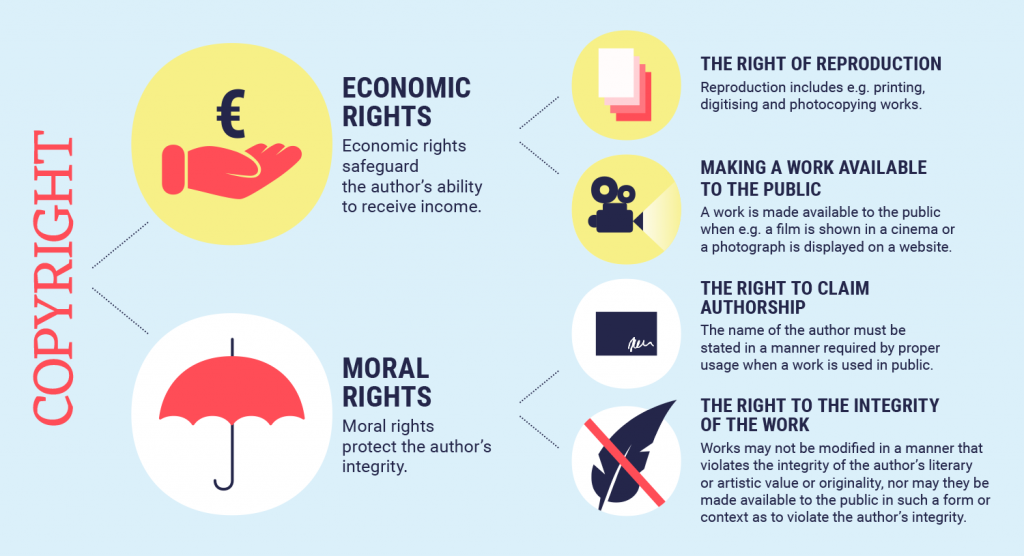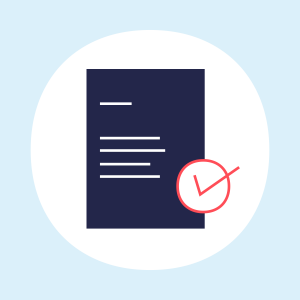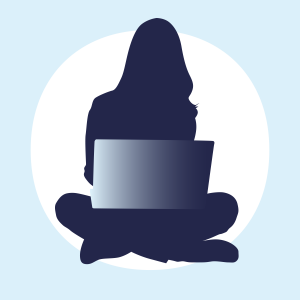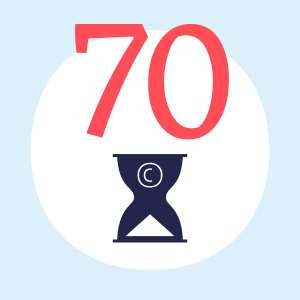Copyright applies to creative works. It is an exclusive right that is granted to the person who created the work. The work is protected automatically once it is created. It is not necessary to register a work for it to be protected by copyright. Application of copyright protection does not depend on publishing or make available to the public.
Authors can transfer their copyrights freely to other parties, such as individual people or communities. The transfer of a copyright can be either compensated (e.g. sales or exchanges) or gratuitous (e.g. donations). Authors can transfer their rights in their entirety or partially.
There is no legally defined specific form of agreeing on the transfer of a copyright.
Copyright agreements can be made orally or in writing. For instance, a journalist can transfer the right to publish an article they wrote to a newspaper or magazine.
Considering the interests of both parties, it is advisable to make the agreement in writing. This helps both parties to understand the agreement terms in a uniform manner and prevents the burden of proof to be applied to a party later on.
There are no limitations on the content of a copyright agreement. For instance, the price of a licence to use a work can be freely defined in an agreement. When licences are sold in bulk, such as the Kopiosto photocopying licences, the price is usually based on a specific price table.
Although copyright agreements are subject to contractual freedom, agreements can be limited by competition laws or general principles of contractual law that may make a contract invalid or enforce re-defining the contract terms in a more reasonable form.
The moral rights of an author cannot be transferred in their entirety, however. Authors have the right to have their name announced whenever their work is used (the right of attribution). Authors’ right to the integrity of a work cannot be transferred in its entirety in an agreement either.
In principle, authors have the exclusive right to decide on the use of their works. The publication or communication to the public of a work reduces the scope of the author’s exclusive right. Communication to the public of a work means making it available for the public with authorisation, whereas the publication of a work means that copies of the work are marketed or distributed to the public with the author’s consent.
Several exceptions to the exclusive right of the author are included in the Copyright Act. These are called limitations on copyright. Limitations enable using a work without the author’s consent.
The most common limitations on the author’s exclusive right are private use and quotations.
It is worthwhile noting that even on the basis of a limitation, the use of works should not violate the author’s moral rights and therefore the author’s name and the source should be mentioned. The work must also be legally available to the user.
Private use
Anyone can make a limited number of copies of a work that has been made public for private use, which includes the user and their immediate family. Copies produced for private use cannot be used for other purposes. Selling them, for instance, is strictly prohibited. However, producing copies of computer software and digital databases for personal use is not allowed.
Quotations
Published works can be quoted in accordance with proper usage to the extent necessary for the purpose. For instance, using a quotation for the purposes of criticising a work is allowed.
The extent of using quotations is limited to the extent necessary for the purpose of use. However, there are no specific legally defined limits on the length of a quotation. The most common purpose of a quotation is to illustrate a topic. This means that the quotation can be extensive whenever it is necessary for the purposes of illustrating a subject. The source of the quotation, or the quoted work, must be mentioned whenever making a quotation.
Text and data mining
For the purpose of text and data mining, it is permitted to produce and store copies of works that can be legally accessed if the author of the work has not explicitly prohibited the use of the work. An author may have retained their rights, i.e. prohibited the use of their works for commercial text and data mining in the terms of use of a website or service, the metadata of a file and various restriction standards, for example.
Research organisations and cultural heritage institutions with legal access to a work may produce copies of the work for text and data mining for the purpose of scientific research. It is also permitted to store copies for scientific research, including the later verification of research results. This requires that the copies of the work are only accessibly to those who have the right to access them. Text and data mining by research organisations and cultural heritage institutions for the purposes of scientific research cannot be prohibited by agreements or prevented by technical means.
Parody
A published work can be used in a parody, caricature and pastiche. Legally permitted parody refers to an existing work but deviates from it in “an identifiable manner” through the means of humour or farce, for example. Parody may be, for example, a satirical, exaggerated or comical imitation of another work. However, the law states that parody may not be discriminatory or otherwise hurtful. Permitted parody makes use of the original work for a different purpose and context. For example, a meme can be a form of parody.
Illustration of teaching
A published work may be used in illustration of teaching for non-earning purposes and in electronic environments that are protected or restricted to specific staff members if no extended collective licence that covers teaching activities, or other right of use, is available easily or at all.
Illustration of teaching permits the use of works or parts or excerpts thereof to support, enrich or supplement learning activities. If a work is very limited or short, it may be justified to use the entire work. In order to illustrate teaching, you may, for example, present a YouTube or ad video, because licences are not available for presenting them in teaching. The name of the original author and the source work must always be mentioned appropriately.
A person who has created a literary work or a piece of art is the owner of the work’s or piece’s copyright. Authors have the exclusive right to make decisions concerning their works. Accordingly, authors have the right to prohibit others from using their works. If the work has been created by several authors, a licence to use the work is required from all authors.
In practice and most cases, a copyright means that an author has the right to use their works for economic purposes. In addition, authors primarily have the right to decide on how and where other people can use their works.
Copying a work
Authors have the right to decide on whether the production of copies of their works, such as books or musical works, is allowed. The scope of the right to produce copies includes all possible methods and techniques of copying a work. Both photocopying and scanning are forms of copying, on which the author has the right to decide. Authors also have the right to decide on other forms of storing their works.
Authors can also decide on the copying of their works in modified formats or adaptations. For example, authors have the right to decide on changing the colours of a picture or having a novel translated. The copying of a part of a work is also within the control of the author. For example, copying a verse of a song requires, in most cases, an authorisation from the author.
These general rules also include exceptions, such as the regulation on private use.
Making a work available to the public
Authors have the right to decide whether a work of theirs is made available to the public. Making a copy of a work available to the public in another format, as a translation or an adaptation, in another genre of literature or art or by applying another technique can also be decided on by the author.
Making a work available to the public means that, with the author’s authorisation, the public is given a chance to read their books, listen to their compositions or watch their films. Making a work available to the public can be communicating the work to the public, a public presentation, a public performance or distributing copies of a work to the public as books or in video format, for example, by means of selling, renting or another method of distribution, such as via a network.
Authors have the exclusive right to make a work available to the public in cases of public activities or activities directed at the general public.
Authors’ moral rights
The authors’ moral rights include the right to claim authorship and the right to the integrity of a work.
The right to claim authorship concerns announcing the author’s name. The author’s name must be stated whenever a copy of a work is produced or when the work is made available to the public in a public performance, for instance. There are no clear rules on where and how to announce the author’s name. The author’s name must be announced in a suitable context.
The right to the integrity of a work means that a work cannot be modified in a manner that violates the integrity of the author’s literary or artistic value or originality. Works cannot be made available to the public in a violating format or context.
Copyright remains valid during the author’s life and 70 years from the end of the year of their death. The term of photographs’ copyright protection depends on the type of the photograph. If the photograph is above the threshold of originality, which means that it is original and independent, the protection of its copyright remains valid for the duration of the author’s life and 70 years after their death. The term of other photographs’ copyright protection is shorter. Photographs which are not classified as artistic works are protected for 50 years from the date the photo is taken.
Copyright legislation is international by its nature. There are several international general agreements that extend the scope of copyright protection to include works and subjects protected by related rights originating from other contracting states. Such copyright agreements include the Berne Convention, the Rome Convention, the TRIPS Agreement, the WIPO Copyright Treaty and the WIPO Performances and Phonograms Treaty.
The main principles of these general agreements are:
• the minimum standards of protection, according to which contracting states must enact the minimum standards of protection defined in the agreement in their national legislation.
• national treatment, according to which works or subjects protected by related rights originating from another contracting state must be granted at least the same rights as works created by authors from the country into which the said works are introduced.
Finland’s national legislation is also affected by EU-level copyright directives, which, in certain aspects, define the standards of protection higher than the level of the aforementioned international agreements.
In practice, nearly all works originating from abroad are subject to the same level of copyright protection in Finland as works originating from Finland.
According to law, a person who has created a literary work or a piece of art is the owner of the work’s or piece’s copyright.
Any kind of literary or artistic work can be protected by copyright, if the work in question is original and independent. The purpose of use or the artistic level of a work have no significance in becoming protected by copyright. The technique or material used in the creation of a work do not matter either. For example, both printed photos and digital images online are protected by copyright.
The list of protected works includes for example books, magazines and newspapers, paintings, photographs, films, compositions, lyrics, plays, maps and computer software.
Copyright protects the appearance and expression of the work. On the other hand, the idea, information content, theory or principles of a work cannot be protected. This means that several works can be based on the same subject, theme or plot and be protected by copyright. You can also use information about a work, provided that you write it in your own words.
The authors’ exclusive right means that the use of a work is always subject to an authorisation, except in cases where a limitation of the Copyright Act grants the right to use a work without authorisation. The illegal use of copyrighted works is a copyright infringement.
In cases of unauthorised use, the user is liable to provide the author with a reasonable compensation. This liability is valid even if the user is unaware of the unauthorised nature of use. Users who have used works in good faith are also liable to compensate the author if they have not acquired an appropriate authorisation. In most cases, the minimum sum of the compensation is the price the user should have paid for the appropriate licence.
In addition to the compensation, unauthorised users may be liable to compensate other damages and losses suffered by the author.
In addition to these compensations, copyright infringements may also lead to criminal liability and criminal sanctions. Financial penalties may be imposed for copyright infringements. A maximum of two years in prison can be sentenced for intentionally performed copyright infringements for the purpose of economic gain.
The unauthorised use of works is supervised by The Copyright Information & Anti-Piracy Centre (CIAPC) and Kopiosto, among others.












